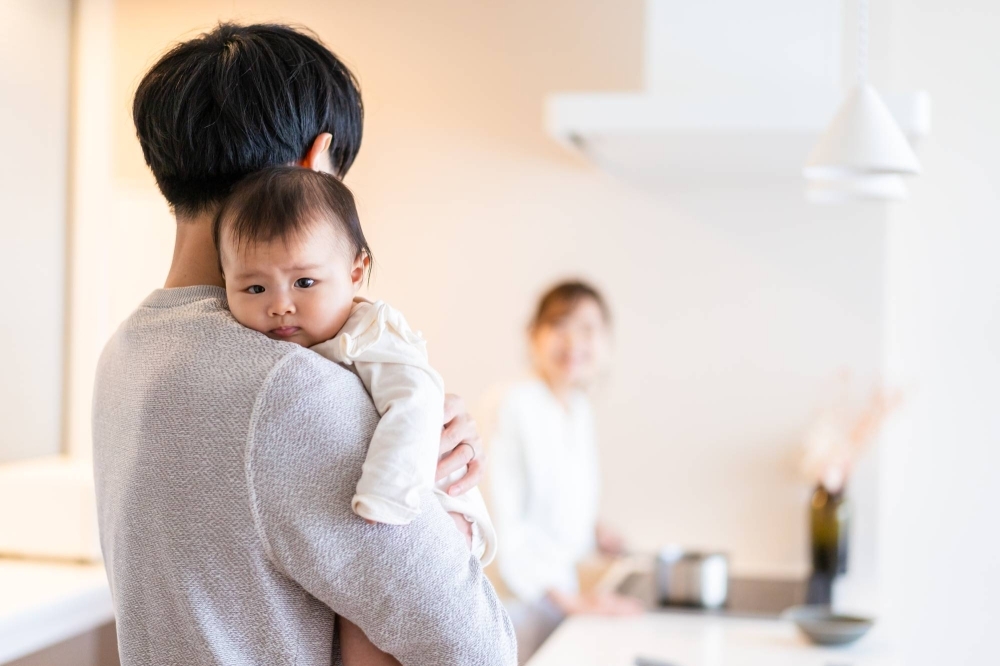In the hope of encouraging more fathers to take paternity leave, a health ministry panel on Monday proposed a plan to increase child care leave allowance so that it covers 100% of income — up from around 80% — if both parents each take 14 days of leave or more.
When working parents take child care leave after the birth of their child, they are paid 67% of their income through their employment insurance. Since they won’t need to pay social welfare premiums during the leave, ultimately 80% of their net income is covered.
The 100% allowance, however, would only be offered for up to 28 days, with the amount for any further leave being around 80% of income. If the child is living in a single-parent household, or one of the parents is a freelancer or not working and therefore cannot take child care leave, the working parent would be eligible for the program, the panel said.
The government wants to see 50% of new fathers take child care leave by 2025 and 85% by 2030.
But the figure stood at 17.13% in fiscal 2022, which ran through March, though that still represents an increase from the 7.48% seen in fiscal 2019, according to the labor ministry. The data also showed that about half of the fathers who took child care leave did so for up to 14 days, prompting criticism that this is still not enough to properly help with taking care of the newborn.
The figure for women, meanwhile, has been hovering at around 80% for the past decade or so, with 95% of them taking leave of six months or more.
According to a survey conducted by the JMA Research Institute in 2022, 39.9% of male workers did not take child care leave because they did not want to reduce their household income. About 23% also said the workplace culture made it hard to take such leave, with supervisors hesitant to give approval, for example.
But things are slowly starting to change. Real estate firm Daiwa Lease, for one, announced in May that it will offer ¥1 million ($6,600) for its male workers who take paternity leave of three months or longer.
The health ministry panel also discussed offering benefits to those who work shorter hours after a child is born.
Panel members, however, were divided over the plan, with advocates saying it would help workers, especially women, to continue working. But opponents argue that it would cement women’s “mommy track” career path, in which women, due to their domestic responsibilities, are forced to give up on their career ambitions as they are further encouraged to work shorter hours. It could also be unfair to other co-workers and create divisions in the workplace, they said.
The administration of Prime Minister Fumio Kishida has been pushing for increased financial support for child-rearing households as part of its “unprecedented” measures to counter the country's declining birth rate. It has plans to set aside ¥3.5 trillion a year for the next three years, but the source of funding is still unclear.
culled from Japan Times


